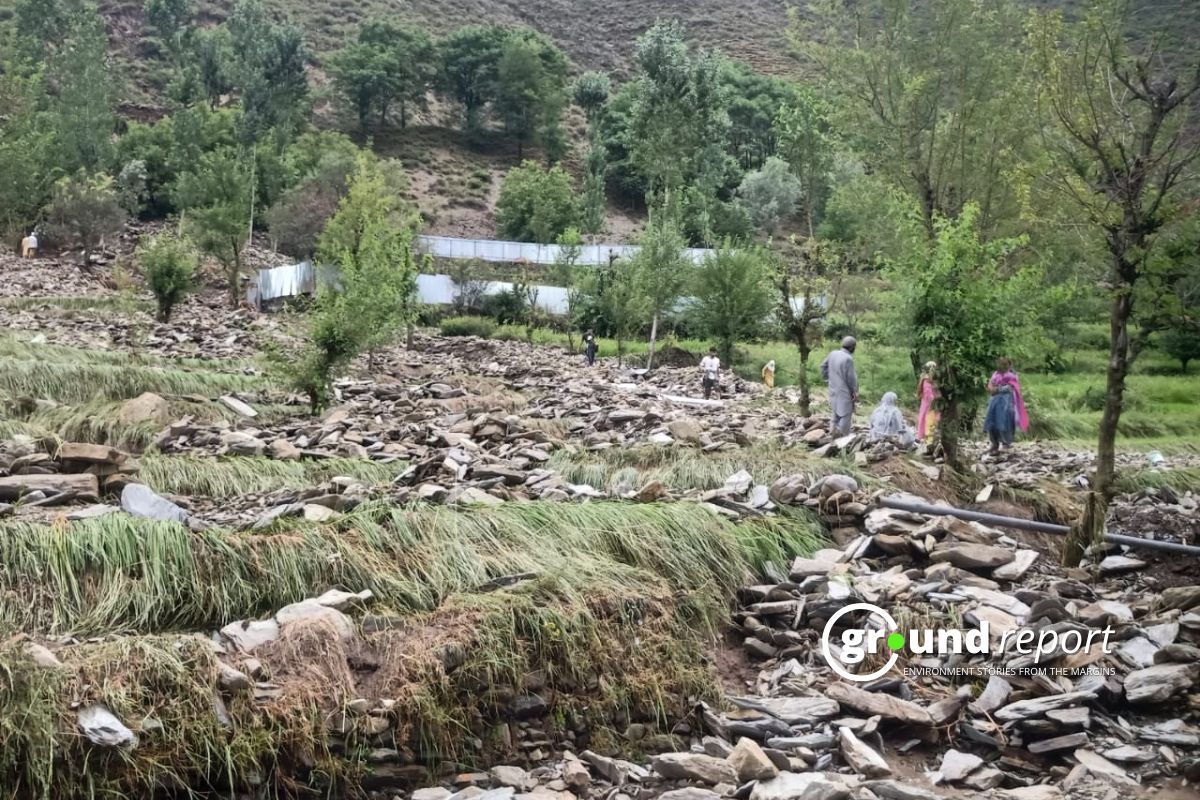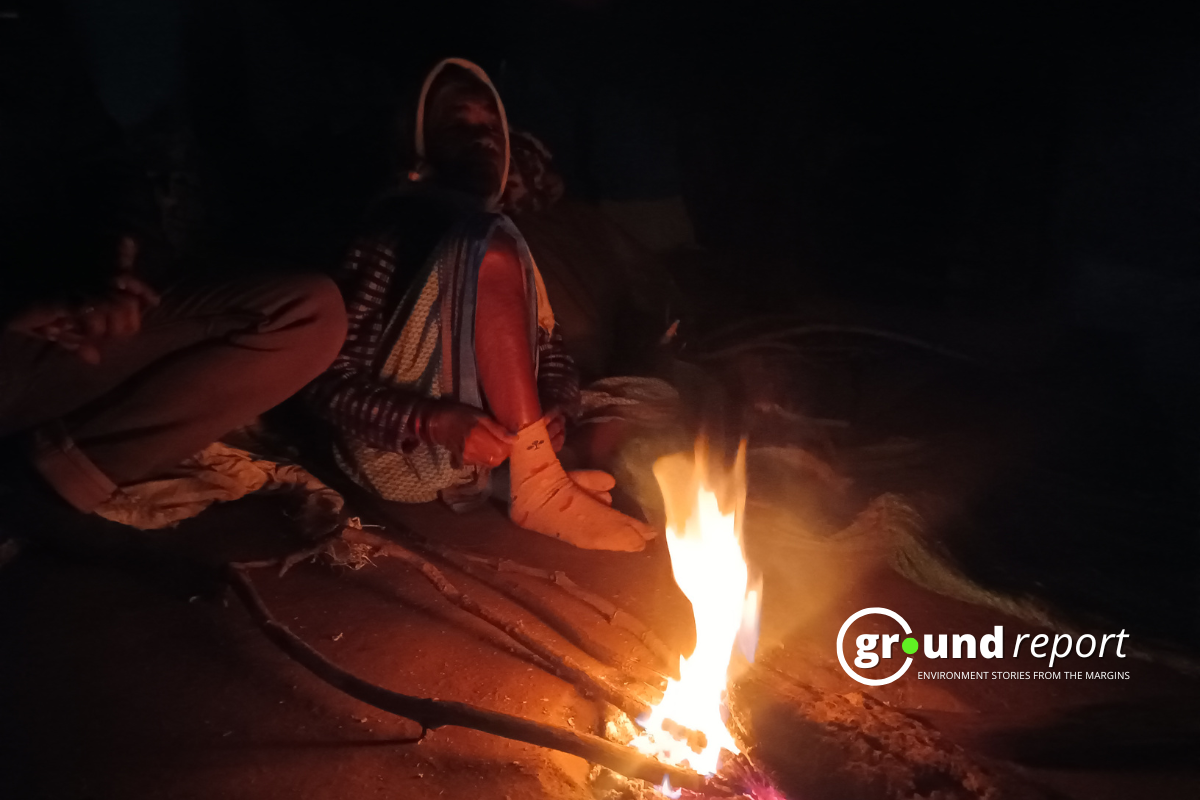Pandhurna district of Madhya Pradesh shares its border with Maharashtra’s ‘Orange City’–Nagpur and it is also known for its Orange production. The citrus fruit has a considerable contribution to the local economy.
However, over a decade, Pandhurna farmers have shifted from Oranges to other crops due to water shortages, rising costs, and unpredictable weather. Farmers who have started growing Oranges are returning to traditional crops like wheat, cotton, and maize, while others are switching to Sweet Lime (Citrus limetta).
Meet 41-year-old Prahlad Boriwar from Kalamgaon in Pandhurna district. He owns seven acres of farmland and rents another 1.5 acres. However instead of Orange, Cotton is his main crop, covering about six acres, along with maize and pigeon pea.
We asked Boriwar why he doesn’t grow Oranges? He replied,
“I have no water, Oranges need water so we don’t grow them.”
He points to some dried trees with his finger. These trees are planted on his 1.5 acre rented farm. He says that this farm also used to have Oranges till a few years ago but due to lack of water, the trees slowly started drying up. He says,
“Earlier there were 150 bushes here, now only 20-25 are left, even those don’t bear any fruit.”
Farmers in Pandhurna and surrounding districts of Madhya Pradesh and Maharashtra are shifting from Orange cultivation to alternative crops, such as sweet lime, due to water shortages, rising costs, and unpredictable weather.

Farmers shifting towards sweet lime
Around 20 kilometers away from Boriwar’s deserted Orange farms, Sanjay Gangadhar Vaidya grows sweet lime on his 7.5 acres of land. About 20 years ago, he grew Oranges, but after facing continuous losses, he switched to sweet lime. Recalling the past, he says,
“Earlier, we had only Orange trees, but we got stuck in Orange cultivation. Our budget became zero.”
He says that he had to face losses in the Orange crop for five consecutive years. After which he decided to cultivate sweet lime.
While on one hand the Orange orchards around Boriwar were dry, on the other hand, Vaidya’s orchard is blooming with green-yellow fruits and white flowers of sweet lime . In the second week of February, he shows us his orchard and says,
“Our field was harvested just yesterday. If you had come a day earlier, our orchard would have been full.”
He says that this time he has received a production of about 12 tonnes from his farm. Comparing his production with Oranges, he says that Oranges need to be fully ripe to be sold, but sweet lime can also be sold raw. Therefore, if the price is good, there is no need to keep it till it ripens.
Sweet lime also known as Mausambi is the second most popular citrus fruit in the country. In 2023-24, its production was 38.14 lakh tonnes from 5.86 lakh acres in the country. Maharashtra is the second-largest producer of the Mausambi in the country while Madhya Pradesh stands fourth in the row. According to the first estimate of 2024, 1,38,556.51 metric tonnes of mausambi was produced in 19,817.72 acres in Madhya Pradesh.

Orange vs. sweet lime cultivation
In the last five years, both the area and production of mausambi have increased in Madhya Pradesh. Shajapur district is the largest producer in the state. Senior horticulture development officer in charge of Pandhurna district, Siddharth Dopare believes that the production of Mausambi in Pandhurna and Chhindwara districts adjoining Maharashtra has been better than before. He attributes this to the economic benefits accruing to Maharashtra’s farmers.
Like Oranges, sweet lime also has three crops in a year– Ambe Bahar (Ambia Bahar in local language), Mrig Bahar and Hast Bahar. Like Oranges, flowers of Ambe Bahar start blooming in February. Whereas flowers of Mrig Bahar come in June.
But there are many differences between the crop of Orange and sweet lime. Farmer Vaidya says that while it takes five years for an Orange tree to bear fruits, a sweet lime tree starts bearing fruits in mere two to three years. He adds,
“In this way, the farmer starts getting earlier output in sweet lime than Orange.”
Dopare, says that sweet lime is a low-risk’ crop compared to Orange. Explaining its meaning, he says that the branches of sweet lime are stronger than those of Orange. Due to this, the tree suffers less damage in case of a storm and the fruits do not fall and get spoiled.

Vaidya explains this speciality of sweet lime from the cost point of view. Actually, due to the weak branches of Oranges, when the fruits come, the tree has to be tied with bamboo from all sides (staking). In the local language it is called beghanya. Vaidya says,
“At least 8 bamboos are required to tie an Orange tree. Here the price of one bamboo is 50 rupees. That means bamboos worth 400 rupees are used in one tree. Then a rope worth 100 rupees is tied to it. In this way, the cost of one tree is Rs 500.”
He explains that if a farmer has even 500 trees, the total cost can reach Rs 2,50,000. Despite investing such a significant amount of money and labor, there is no guarantee that the trees will bear fruit in the coming years. About 25% of the bamboo gets spoiled in two years, due to which this cost remains. Whereas there is no need to tie the sweet lime tree with bamboo. Due to which this cost is saved.
However, the lifespan of an Orange tree is longer than sweet lime. Orange trees can live up to 100 years, out of which fruits come for 50 years. Whereas local farmers say that the sweet lime tree bears fruits only for 25 years.

Suresh Bhaiyaji Narnaware (59), from Katol in Nagpur district, worked as a gardener in Madhya Pradesh and Maharashtra until six years ago. He planted Orange saplings in a small section of his 2-acre orchard, but after a year of poor growth, he uprooted and discarded them.
Now, he has switched to cultivating sweet lime across the entire 2 acres with 277 trees. Due to his financial constraints, he finds sweet lime more cost-effective than Oranges, despite being only 60 km from Nagpur.
When asked about the cost, he reiterates the cost of bamboo and also says that sweet lime can be kept in cold storage for 3 months but Oranges cannot last for that long. Apart from this, while Oranges have to be sprayed with pesticides 6 to 7 times, it has to be done only 3 times in sweet lime. Sharing his experience of last year’s crop, he says,
“Last year I planted 15 thousand rupees and my orchard was sold for 20 thousand.”
Bhushan Thakur (42), who has been trading sweet lime for more than 20 years, says that sweet lime has a higher chance of getting a better price than Oranges. Sharing his experience from last year, he says that last year the price of sweet lime went from 15 thousand to 65 thousand rupees per quintal. He says that due to its medicinal use, the demand for sweet lime remains throughout the year.

Weather’s effect and sweet lime
Siddharth Dopare says that Orange trees are more sensitive to weather, so when heat increases, water shortage or storm comes, its cultivation causes more damage than sweet lime. He says that the sweet lime tree survives even in less water and there is not much difference in its fruit.
Dr. Chandan Kumar, subject matter specialist of horticulture at Central Arid Zone Research Institute (CAZRI), says in one of his papers that 13 to 37 degree temperature is ideal for sweet lime. On the other hand, dry and barren conditions with less rainfall (75 to 250 cm) are best for its crop.
The region of Vidarbha is known for water shortage and drought. The maximum temperature here goes up to 48 degrees Celsius. Along with this, 93% of the agricultural land here is completely dependent on monsoon. On an average, 705.1 mm of rain falls in this area throughout the year. But there was a severe drought here in 2002, 2004, and 2009. Since 2012, the conditions have deteriorated to the most vulnerable drought status. After this event, drought is observed every alternate year, making the situation even worse. Due to this drought situation, the production of Oranges has decreased by 50 to 70% between 2017 and 2019.
In such a situation, farmers are choosing a crop like sweet lime which has a higher capacity to tolerate drought than Oranges. However, due to extreme drought in the Marathwada region of Maharashtra, the sweet lime crop has also suffered a lot. But the farmers we talked to say that sweet lime is the best crop for them right now.
However, it is not easy for any farmer to shift from Orange to sweet lime. It takes about 3 years for the first crop of sweet lime to come. In such a situation, the farmer has to depend on traditional crops for 3 years. This affects his main income from Oranges for 3 years.
Prahlad Boriwar still believes in wheat and cotton crops. He says that his financial situation does not give him a chance to experiment with sweet lime cultivation. Although he knows this much about sweet lime that it requires less water to grow. But he does not agree that he will ever grow it in the future.
Support us to keep independent environmental journalism alive in India.
Keep Reading
Erratic rainfall: Orange farmers and traders suffer in Pandhurna
Wadda Mal’s water woes: Families fight for survival amid crisis
Chhindwara’s maize-ethanol dream: promise vs reality
Soil Health Card: Ambitious scheme faces ground-level challenges
Follow Ground Report on X, Instagram and Facebook for environmental and underreported stories from the margins. Give us feedback on our email id greport2018@gmail.com.
Don’t forget to Subscribe to our weekly newsletter, Join our community on WhatsApp, and Follow our YouTube Channel for video stories








